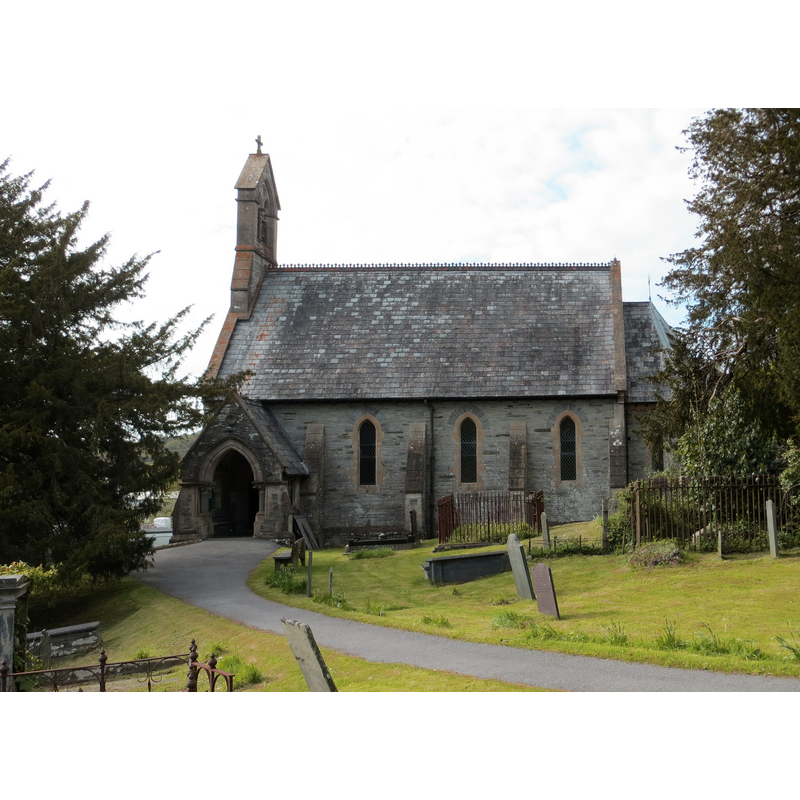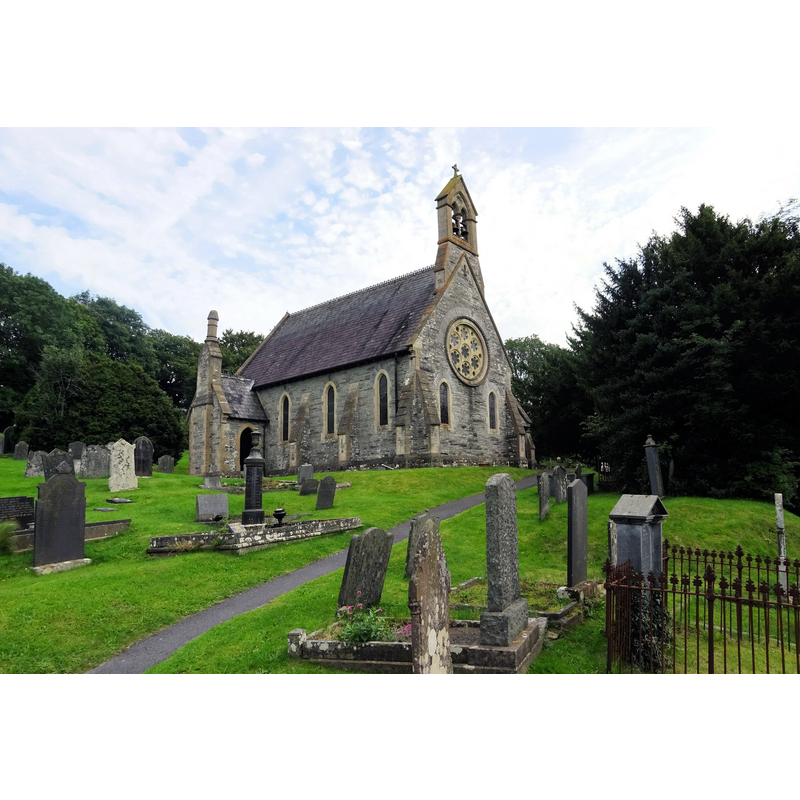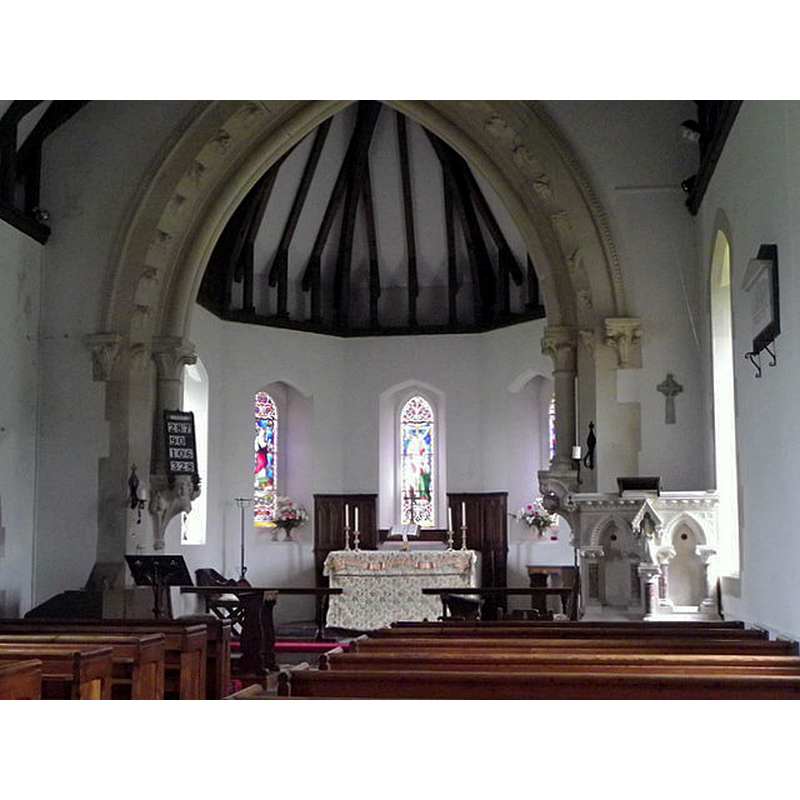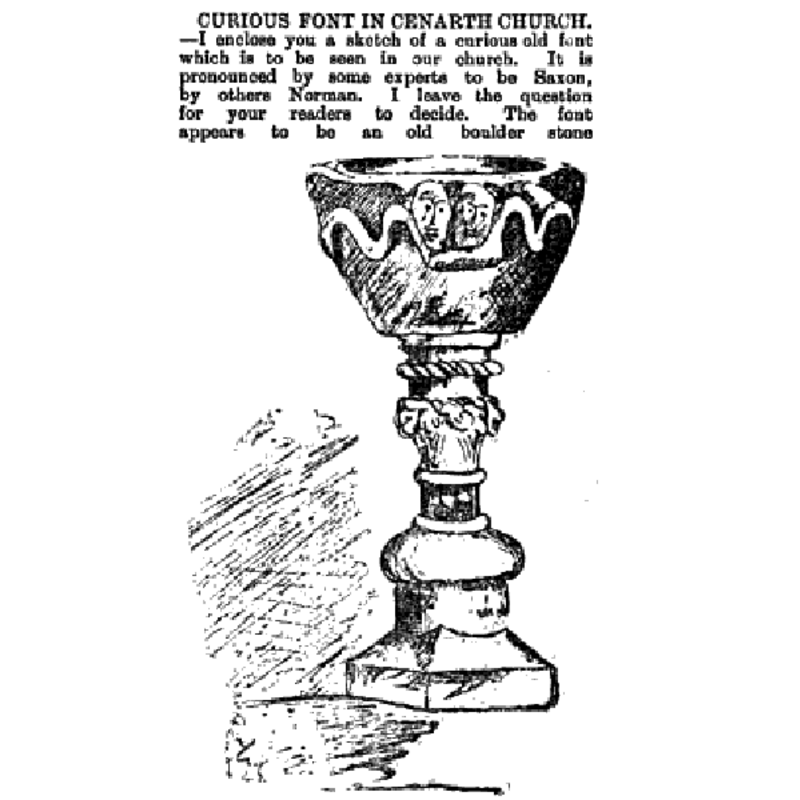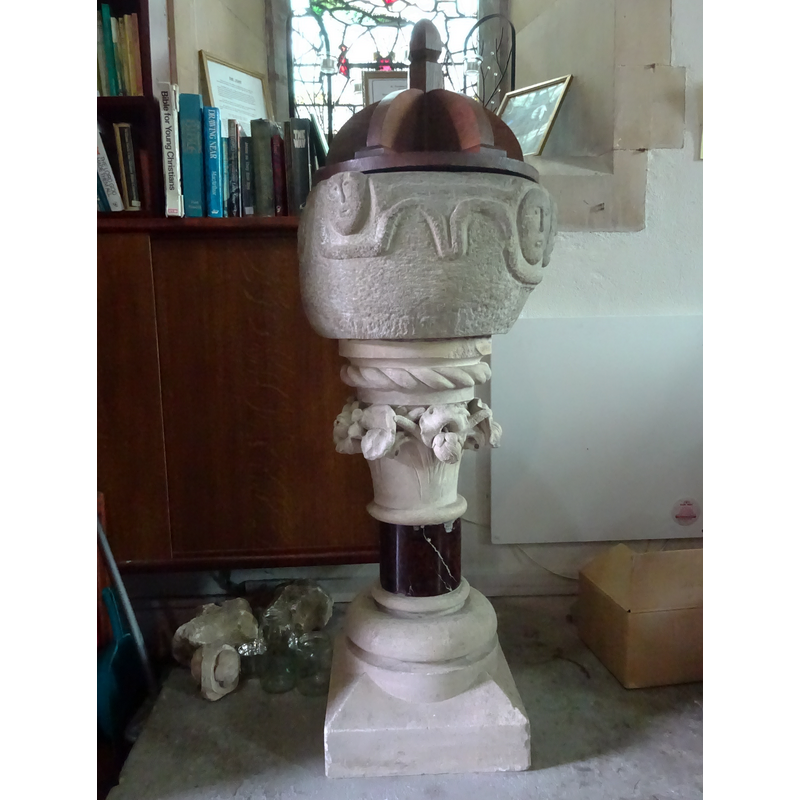Cenarth
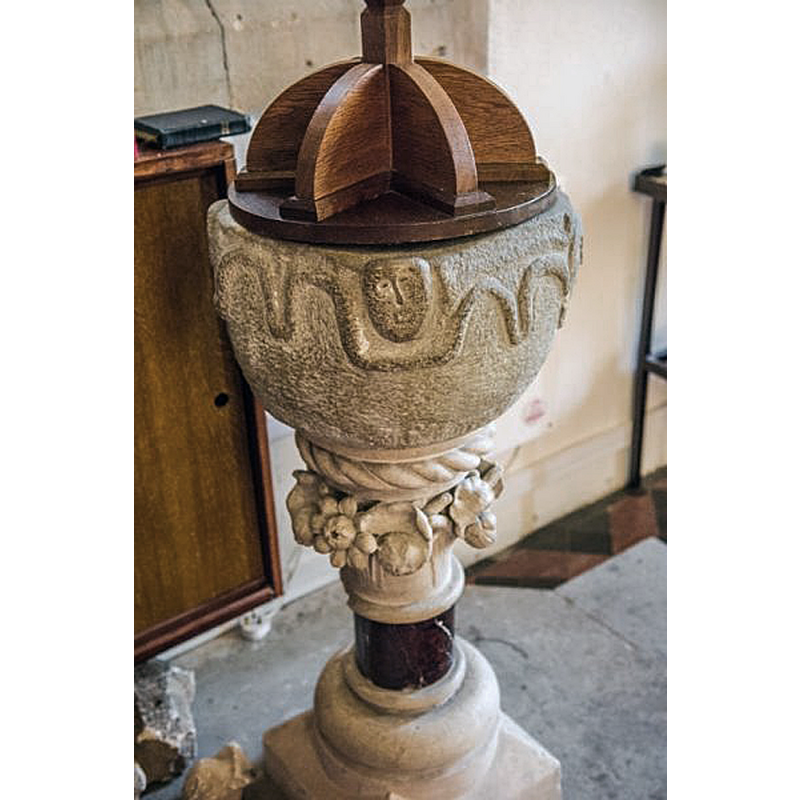
Image copyright © David Ross & Britain Express Ltd, 2019
Standing permission
Results: 9 records
design element - motifs - moulding - wawy
Scene Description: Peter Lord [cf. FontNotes] suggests the curved and wavy moulding could be a serpent
Copyright Statement: Image copyright © Llywelyn2000, 2017
Image Source: digital photograph taken 2 July 2017 by Llywelyn2000 [https://commons.wikimedia.org/wiki/File:Llawddog,_Eglwys_Sant_Llanddog,_St_Llawddog's_Church,_Cenarth,_Ceredigion_09.jpg] [accessed 3 July 2019]
Copyright Instructions: CC-BY-SA-4.0
human figure - head
Scene Description: one of five around the basin
Copyright Statement: Image copyright © Llywelyn2000, 2017
Image Source: digital photograph taken 2 July 2017 by Llywelyn2000 [https://commons.wikimedia.org/wiki/File:Llawddog,_Eglwys_Sant_Llanddog,_St_Llawddog's_Church,_Cenarth,_Ceredigion_10.jpg] [accessed 3 July 2019]
Copyright Instructions: CC-BY-SA-4.0
human figure - head - 2
Scene Description: a total of five heads appear around the basin side;the two of them on this side form a pair (Adam & Eve?) Peter Lord [cf. FontNotes] suggests the curved and wavy moulding could be a serpent
Copyright Statement: Image copyright © Llywelyn2000, 2017
Image Source: digital photograph taken 2 July 2017 by Llywelyn2000 [https://commons.wikimedia.org/wiki/File:Llawddog,_Eglwys_Sant_Llanddog,_St_Llawddog's_Church,_Cenarth,_Ceredigion_09.jpg] [accessed 3 July 2019]
Copyright Instructions: CC-BY-SA-4.0
view of church exterior - south view
Scene Description: the 19thC church built near the side of the now disappeared medieval church
Copyright Statement: Image copyright © Peter Wood, 2013
Image Source: edited detail of a digital photograph taken 22 May 2013 by Peter Wood [www.geograph.org.uk/photo/3471594] [accessed 3 July 2019]
Copyright Instructions: CC-BY-SA-2.0
view of church exterior in context - northwest view
Scene Description: the 19thC church built near the side of the now disappeared medieval church
Copyright Statement: Image copyright © Llywelyn2000, 2017
Image Source: edited detail of a digital photograph taken 2 July 2017 by Llywelyn2000 [https://commons.wikimedia.org/wiki/File:Llawddog,_Eglwys_Sant_Llanddog,_St_Llawddog's_Church,_Cenarth,_Ceredigion_04.jpg] [accessed 3 July 2019]
Copyright Instructions: CC-BY-SA-4.0
view of church interior - nave - looking east
Scene Description: the 19thC church built near the side of the now disappeared medieval church
Copyright Statement: Image copyright © Maigheach-gheal, 2010
Image Source: digital photograph taken 22 September 2010 by Maigheach-gheal [ww.geograph.org.uk/photo/2087248] [accessed 3 July 2019
Copyright Instructions: CC-BY-SA-2.0
view of font
view of font and cover
Scene Description: it is hard to believe than an architect designed this modern base for the old basin
Copyright Statement: Image copyright © Llywelyn2000, 2017
Image Source: Llywelyn2000 digital photograph taken 2 July 2017 by Llywelyn2000 [https://commons.wikimedia.org/wiki/File:Llawddog,_Eglwys_Sant_Llanddog,_St_Llawddog's_Church,_Cenarth,_Ceredigion_08.jpg] [accessed 3 July 2019]
Copyright Instructions: CC-BY-SA-4.0
view of font and cover
Scene Description: it is hard to believe than an architect designed this modern base for the old basin
Copyright Statement: Image copyright © David Ross & Britain Express Ltd, 2019
Image Source: digital photograph by David Ross and Britain Express [www.britainexpress.com/attractions.htm?attraction=557] [accessed 3 July 2019]
Copyright Instructions: Standing permission
INFORMATION
FontID: 06358CEN
Object Type: Baptismal Font1 (basin only)
Church/Chapel: Parish Church of St. Llawddog in Cenarth [orig. from the church of St. Tysilio in Llandisiliogogo]
Church Patron Saints: St. Llawddog [aka Lleudadd] [St. Tysilio [aka Suliau] in Llandysiliogogo]
Church Location: Cenarth, Newcastle Emlyn SA38 9JL, UK
Country Name: Wales
Location: Carmarthenshire, Dyfed
Directions to Site: Cenarth is located on the A484, in the Tivyside, about 12 km EES of Cardigan [Llandysiliogogo is located near Llanina, up the Ceredigion Coast, halfway between Cardigan and Aberystwyth]
Historical Region: formerly Cardiganshire?
Font Location in Church: Now inside the church at Cenarth [cf. FontNotes]
Century and Period: 12th century, Norman
Credit and Acknowledgements: We are grateful to David Ross and Britain Express [www.britainexpress.com] for his photograph of this font
Church Notes: medieval church demolished; was located just south of the present church, built in 1872
Font Notes:
Click to view
The entry for Llanysilio-Gogo in Lewis' Dictionary of 1849 reads: "the font, which is octangular, is supported on a pillar of the same form." Noted and illustrated in a communication by D.H. Davies in the 31 August 1898 issue of Bye-Gones, in which the author narrates the discovery and early vicissitudes of this object. Evans (1914) writes of a font from the church at Capel Cynon: "The stone Font belonging to this church is now in the parish church of Cenarth, Carmarthenshire." Tyrrell-Green (1928) writes: "The very interesting font at Cenarth (Carmarthen) belonged at first to the church at Llandisiliogogo in the adjoining county of Cardigan. For some time the bowl did duty as a pig-trough in a farmyard, and when Cenarth church was rebuilt in 1872 it was removed into it and placed in its present position upon a very incongruous pedestal". This same source (ibid.) adds: "Four heads also occur in connection to an ornamental border, as at [...] Cenarth (Carmarthen). In the last case the bowl is round and has ornament in relief of a very simple festoon form, irregularly executed; within the loops at four points are faces also, in relief, and at one of these points where the loop is extra large there are two faces instead of one." Baker-Jones (1970) notes: ''the font is ornamented with human masks, the heads being at four equal distances, enclosed with a serpentine moulding; in one of the divisions there is a pair of heads, making five in all around the bowl. The workmanship is extremely rude and its execution may have taken place in the 13th century. The shaft and base are modern.'' Described and illustrated by Peter Lord in Diwylliant... (1998-2003), who dates it to the 12th century and mentions five heads, "three distributed equally around the font, with two together. The pairing suggests Adam and Eve, an idea reinforced by the sinuous line which circles the font, suggestive of a serpent" [NB: the ondulating snake around human or other animal heads as a motif appears on some Romanesque Scandinavian fonts -- it is not clear whether or not the 'moulding' here was meant to represent the reptile]. Noted and illustrated in Thurlby (2006). The entry for this church in COFLEIN [www.coflein.gov.uk/en/site/309895/details/st-llawddogs-church-cenarth] [accessed 3 July 2019] notes: "The current font is late twelfth to early thirteenth century in date, and was removed from St Tysilio's Church, Llandisiliogogo (NPRN 400361) in the nineteenth century. It has a circular bowl with wave-moulding and four human masks in relief, and is similar to the fonts at St Sulien's Church, Silian (NPRN 402554) and St Patrick's Church, Pencarreg (NPRN 418382). Measurements are given as 52in circumference, 14in external diameter, and 12in depth. The four masks (one is a pair, making five in all) are described as being equidistant and enclosed within a serpentine moulding. Two of the masks are described as rising slightly above the edge of the font, whilst the other three heads, one of which droops slightly to the left, do not reach the edge. The Church's original font had a square bowl with scalloping, and is thought to date to the thirteenth century. In 1913 it was visible in the garden of the Vicarage, but was subsequently removed to St John's Church, Sarnau, and later to St Michael's Church, Penbryn (NPRN 105363). "
COORDINATES
UTM: 30U 395770 5767690
MEDIUM AND MEASUREMENTS
Material: stone
Number of Pieces: two [new base]
Font Shape: bucket-shaped (mounted)
Basin Interior Shape: round
Basin Exterior Shape: round
Drainage Notes: lead lining [modern]
Diameter (includes rim): 35.56 cm*
Basin Depth: 30.48 cm*
Notes on Measurements: * COFLEIN [cf. FontNotes]
LID INFORMATION
Date: modern
Material: wood
Apparatus: no
Notes: short heavy ribs on round platform; pinted finial; modern
REFERENCES
The Visual Culture of Wales = Diwylliant gweledol Cymru, Cardiff: University of Wales Press, 1998-2003
Baker-Jones, D.L., "Looking at Carmarthenshire Churches", VII (1970), The Carmarthenshire Historian, 1970
Evans, J.T., The Church Plate of Cardiganshire, Stow-in-the-Wold: James H. Halden, 1914
Lewis, Samuel, A Topographical Dictionary of Wales, Comprising the Several Counties, Cities, Boroughs, Corporate and Market Towns, Parishes, Chapelries, and Townships, with Historical and Statistical Descriptions [...], London: S. Lewis, 1833
Thurlby, Malcolm, Romanesque architecture and sculpture in Wales, Little Logaston, Woonton, Almeley, Herts.: Logaston Press, 2006
Tyrrell-Green, E., Baptismal Fonts Classified and Illustrated, London: Society for Promoting Christian Knowledge: The Macmillan Co., 1928
![Peter Lord [cf. FontNotes] suggests the curved and wavy moulding could be a serpent](/static-50478a99ec6f36a15d6234548c59f63da52304e5/compressed/1190703006_compressed.png)

